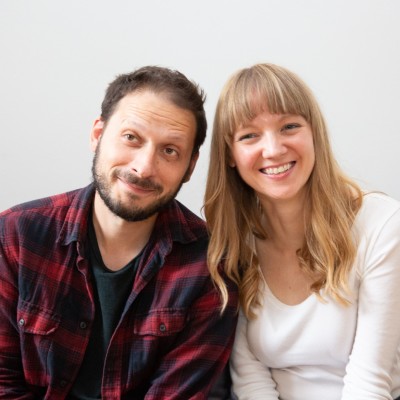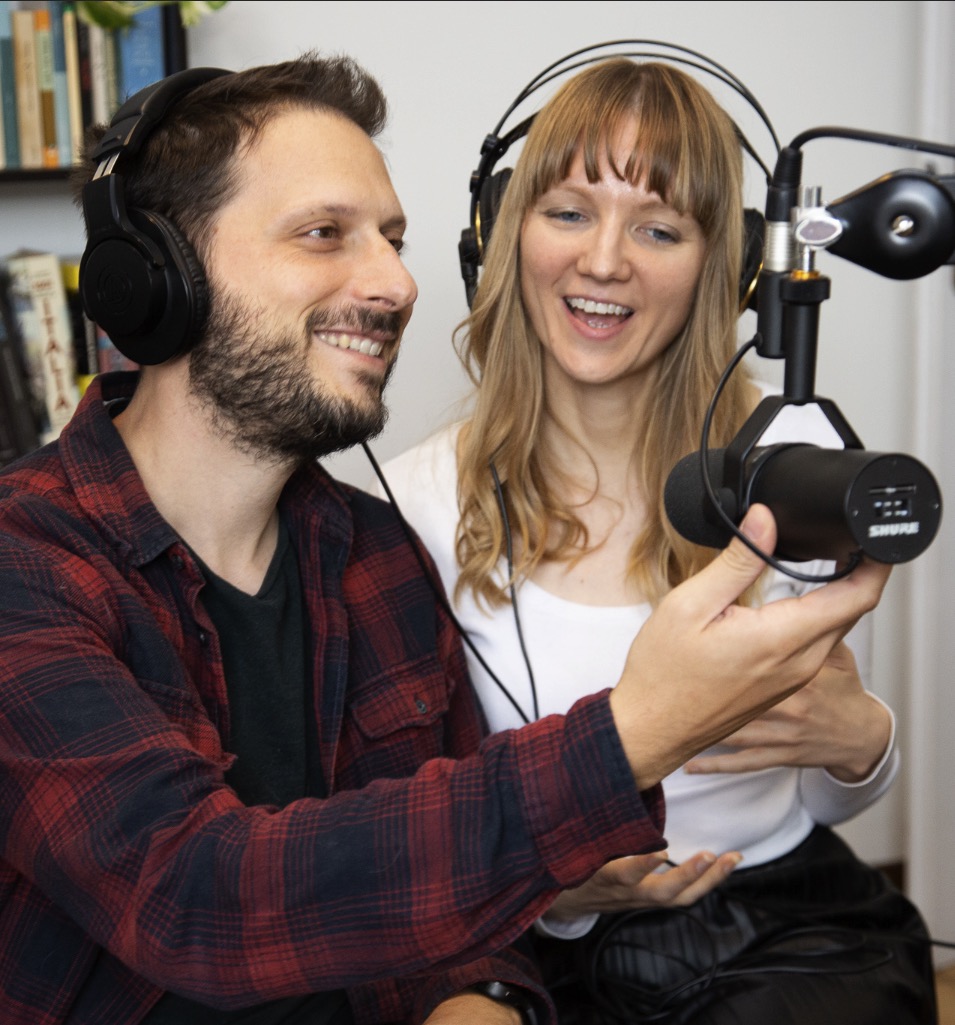You know that feeling when you get to the till in a foreign country but you don’t know the language, so you just point and pray that they don’t ask you anything? Well, that won't happen in Italy anymore!
In today’s episode, you’ll learn how to pay for things and understand the questions shop assistants might ask you at the till.
To help you remember what you learnt in today's lesson, below you'll find bonus materials like word lists, quizzes and flashcards. But first...
Become a 5-minute Italian member (it's free!)
Learn to speak and understand Italian faster by joining the 5 minute Italian club! When you sign up, you'll get:
- Mini Italian lessons + bonus materials delivered to your inbox.
- Access to the private Facebook group where you can practice chatting in Italian.
- Invites to free speaking workshops.
If you'd like to join us, click here to become a member of 5 Minute Italian.
Bonus Materials
Remember and practice using what you learnt with the bonus materials for today's episode.
Today's Italian words
Sachetti? = Would you like a bag? (lit. bags?)
Sacchetto/busta/sportina = plastic bag (the difference is regional)
Due grazie = Two please (lit. two thank you)
Quant’è? = How much is it?
Quanto costa = How much does it cost?
Quanto viene? = How much does it come to?
Sono venti e cinquanta = It’s twenty euro fifty (lit. they’re twenty and fifty)
Posso pagare con la carta? = can I pay by card?
Certo = certainly/of course
Carta o bancomat? = Credit card or debit card?
Bancomat = Debit card/cash machine (two meanings)
Take the Quiz!
How much did you learn? Find out in the 5-minute Italian quiz!
Click here to take the quiz for this episode: How to pay for things at the till in Italian
Italian flashcards
Remember the vocabulary from your 5 Minute Italian lessons by downloading the digital flashcard pack.
- Download the flashcards: How to pay for things at the till
- Not sure how it works? Click here to watch the tutorial.
Transcript
Please note, this is not a word for word transcript
Katie: You know that feeling when you get to the till in a foreign country but you don’t know the language, so you just point and pray that they don’t ask you anything? Well in today’s episode you’ll learn how to speak Italian in these situations so you can pay for things and understand the questions that people ask you at the till. Find out how, in episode 28 of 5 minute Italian.
Ciao a tutti e benvenuti a 5 minute Italian, hi everyone and welcome to 5 minute Italian. I’m Katie…
M: And I’m Matteo. Ciao.
K: In the last couple of lessons, we’ve been learning how to order things in shops and supermarkets. This week we’re going to continue this theme by learning how to pay for things at the till. So let’s practice a typical conversation at the till in Italy.
K: Buongiorno
M: Buongiorno. Sachetti?
K: Si, due, grazie… quant’è?
M: Sono venti e cinquanta.
K: Posso pagare con la carta?
M: Certo. Carta o bancomat?
K: Carta.
M: Grazie, arrivederci!
K: Arrivederci!
K: We started with buongiorno, which is better than ciao in situations like this where you don’t know the person you’re talking to.
M: Then you heard: sacchetti?
K: Which literally means “bags?” and it’s like asking “would you like a bag?” Shop assistants don’t give bags automatically, they normally ask.
M: Then you heard si, due, grazie.
K: Yes, two thank you. Remember with polite replies to questions, Italians don’t say please, they say thank you: Si, grazie.
M: To ask for a bag, you can say: Posso avere un sacchetto?
K: Here we meet again the very useful phrase posso avere which means “can I have”.
K: And we’ve got the singular form of the word bag. To say “one bag”, we say:
M: Un sacchetto
K: With an “o” at the end: sacchetto. And to say two bags, we say:
M: Due sacchetti
K: With an “i” at the end. And you can have tre sacchetti, quattro sacchetti and so on.
M: But the word can change depending on the region. In the south of Italy, we usually say busta.
K: Which can cause confusion, because it also means envelope. Once one of our friends from Naples walked into a shop in Milan with her hands full and asked for a busta, and the shop assistant stared at her blankly and handed her an envelope. In the supermarket they’ll probably know what you mean, but it can be handy to listen out at the till to learn the regional variation for where you are. You may sometimes hear the word sportina too,
M: Then you heard quant’è?
K: Which means “how much is it?” Quanto means “how much” and “è” means it is. And Italians smush the words together, so you get: quant’è?
M: You can also say quanto costa?
K: which means: “how much does it cost?”
M: And quanto viene?
K: Viene means “come”. So quanto viene literally means “how much come?” It’s a bit like asking “how much does it come to?
M: Next, you heard: Sono venti e cinquanta.
K: Can you guess how much that means? Venti e cinquanta literally means “twenty and fifty”. “20 euros 50”. Italians use the word “and” - e - between the euro and the cents. To introduce the price, they start with the word sono which literally means “they are”. They are twenty and fifty.
M: Sono venti e cinquanta.
K: If you need some help with numbers, you can go back and check out episodes 14 and 15. Next, you heard:
M: Posso pagare con la carta?
K: Literally: “Can I pay with the card”, which of course means “can I pay by credit card”. Posso means “can I”, pagare means “pay” and la carta means “the card”. Italians use the word la (the) much more than in English.
M: Then you heard: certo.
K: Which means “certainly” or “of course”. Next, you heard the question:
M: Carta o bancomat?
K: Which is a bit of a weird one. Bancomat means debit card. And for some reason in Italy, for some reason at the till, they need to know if you’re paying with credit or debit card. Bancomat actually has 2 meanings, it also means cash machine, which is handy to know if you need to get cash out in Italy.
M: Let’s listen to the conversation again.
K: Buongiorno
M: Buongiorno. Sachetti?
K: Due, grazie.
M: Sono venticinque e cinquanta.
K: Posso pagare con la carta?
M: Certo. Carta o bancomat?
K: Carta.
M: Grazie, arrivederci!
K: Arrivederci!
K: That’s all we have time for today, thanks for listening. And if you’d like to get more mini Italian lessons delivered to your inbox, don’t forget to subscribe by following the link below. Grazie, and ciao for now, see you next time, or as we say in Italian, alla prossima!
Get more 5-minute Italian
To get more 5 minute Italian, including lessons delivered to your inbox, access to the private Facebook group and invites to speaking workshops, click here to become a 5 Minute Italian member.

